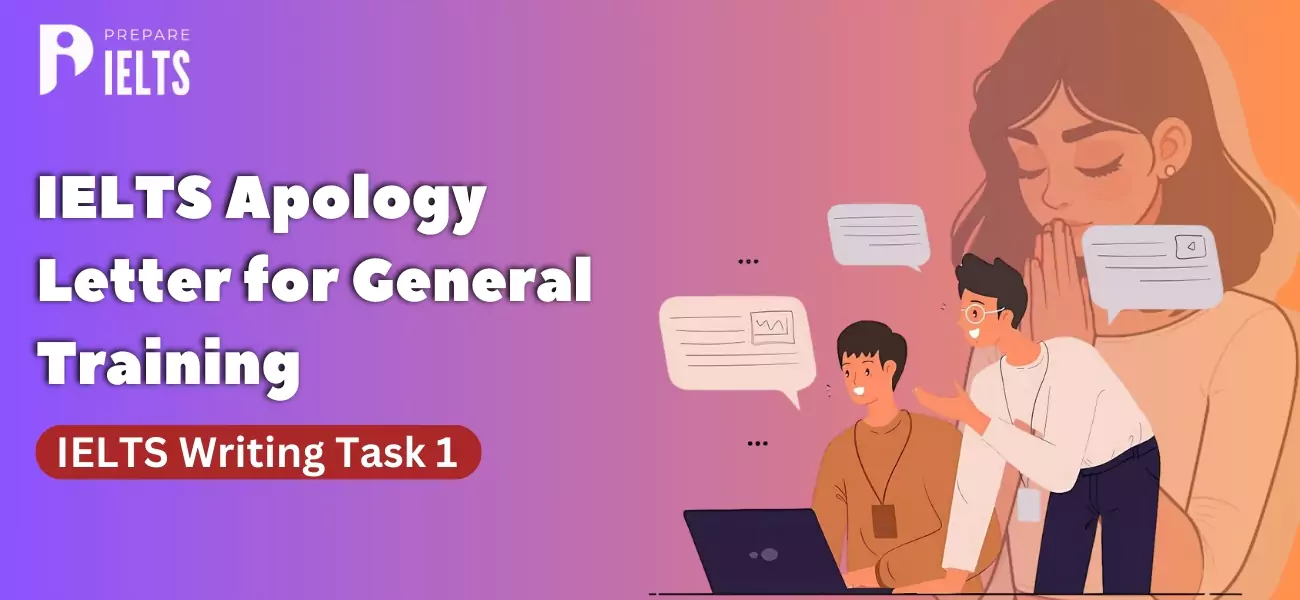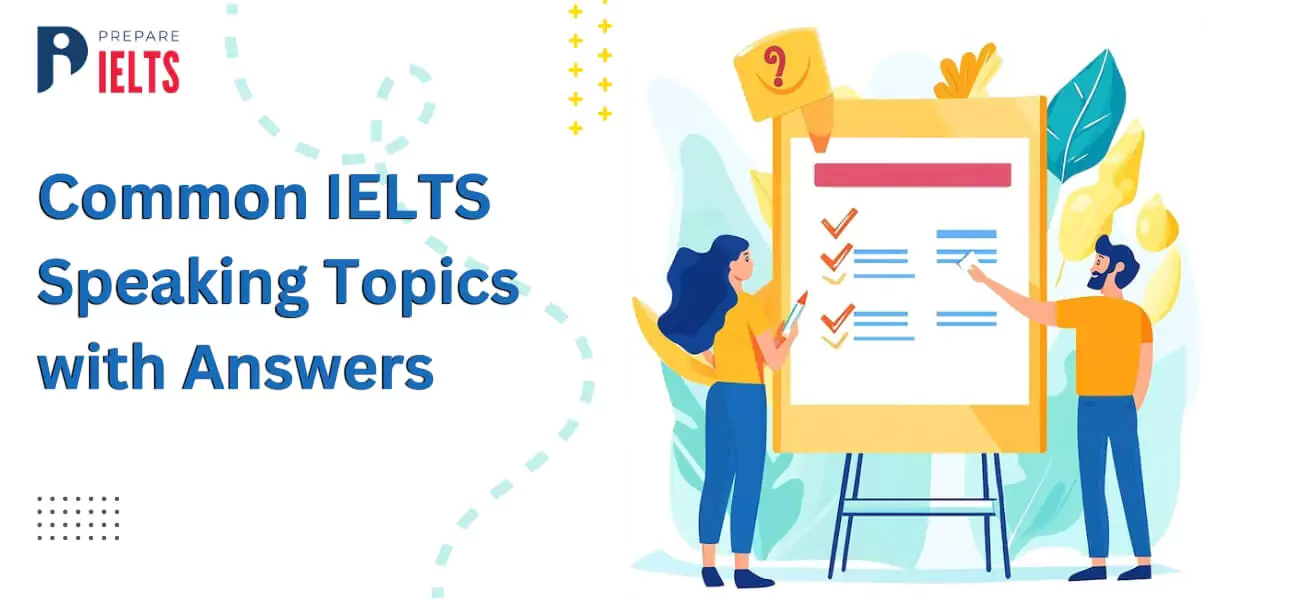
Overview
In today's modern and interconnected world, English proficiency is an unquestionable requirement. It is required for effective communication in a variety of contexts, including academics, immigration, and job progression. The International English Language Testing System (IELTS), the Test of English as a Foreign Language (TOEFL), and the Pearson Test of English (PTE) are among the most widely used examinations for testing English language proficiency.
Each of these tests is a well-known international exam that serves as the primary means of demonstrating one's level of English language proficiency. The primary purpose of this blog is to compare IELTS, TOEFL, and PTE based on their various strengths and shortcomings, thereby providing information to assist you decide which is the best option for you in achieving your goals. By offering information on each test's specifics, format, and criteria, you will be able to make an informed decision that ensures the achievement of your goals.
Understanding IELTS Vs TOEFL Vs PTE: Detailed Overview
IELTS (International English Language Testing System) Overview
IELTS (International English Language Testing System) is a standardised test that assesses candidates' proficiency in the English language.
Versions and Purpose
- General Training: For migration to English-speaking countries for work or immigration.
- Academic: For those seeking higher education or professional registration.
Test Format
- Listening (30 minutes): 4 sections, 40 questions, ranging from conversations to monologues.
- Reading (60 minutes): 3 sections, 40 questions. Academic has three long texts; General Training includes extracts from books, magazines, newspapers, notices, advertisements, company handbooks, and guidelines.
- Writing (60 minutes): 2 tasks. Academic involves describing a graph or diagram and an essay; General Training includes letter writing and an essay.
- Speaking (11-14 minutes): 3 parts, including an interview, a short speech, and a discussion.
Scoring Criteria
Individualised band score marks from 1 to 9 for each section and an average of the overall band score.
IELTS Preparation Tips
-
Understand the Test Format: Being well acquainted with the test's structure, especially with the various questions in every section, helps.
-
Practice Regularly: Get into immediate reading, speaking, writing and listening activities. Take advantage of real information sources like newspapers, journals, and internet resources.
-
Take Practice Tests: Mimic the exam environment to grow stamina and consequently realise your pacing.
-
Improve Your Vocabulary: Become a diary of words. Study a new word every day, define its meaning, suggest its synonyms, and worship it in the sentences.
-
Seek Feedback: Ask your tutor or join a study group to have your speaking and writing productive skills appropriately evaluated.
-
Practice Speaking with a Partner: Learn English by talking with a friend and not when you are in the examination room.
-
Read Instructions Carefully: Note that each section's directives must be followed precisely to avoid errors.
TOEFL (Test of English as a Foreign Language) Overview
Format
- Internet-based Test (iBT): Most common, focusing on academic English.
- Paper-based Test (PBT): This test is available in locations without internet access.
Test Format
- Reading (60-80 minutes): 3-4 passages from academic texts with 36-56 questions.
- Listening (60-90 minutes): 6-9 passages with 34-51 questions, including lectures and conversations.
- Speaking (20 minutes): 6 tasks evaluating the ability to speak about familiar topics and integrate skills by speaking about what was read and listened to.
- Writing (50 minutes): 2 tasks requiring responses to reading and listening tasks and an opinion on a topic.
Scoring Criteria
Scores vary from 0 to 120, resulting in 0 to 30 points for each section.
TOEFL Preparation Tips
-
Familiarise with the Format: Make certain that the speaking and writing sections are looked into, especially because they cause difficulties for non-native speakers.
-
Use Academic Materials for Practice: For acclimatising and training, you can get practice with lectures, academic papers, presentations, etc.
-
Practice Speaking into a Microphone: As the exam is by way of recording, thus self assess your speaking capabilities by speaking clearly into a mike.
-
Enhance Note-Taking Skills: Develop a shortcut for writing quickly, especially for the listening and speaking sections.
-
Leverage Official TOEFL Resources: The official TOEFL practice materials offer a high level of fidelity because their content is very similar to what you will face on the exam day.
Also read: What's the right study plan for IELTS preparation?
TOEFL Test Day Tips
-
Use Your Break Wisely: TOEFL iBT includes 10 minutes of rest to splash its candidates. Plenty of time and restorative activities would be essential to keep yourself ready for more challenging parts.
-
Manage Your Screen Time: Take short breaks to look away from the screen to reduce eye strain during the long test.
PTE (Pearson Test of English) Overview
Format
- Computer-based with an emphasis on real-life English used in academic settings.
Test Format
- Speaking and Writing (77-93 minutes): Personal introduction, read aloud, repeat the sentence, describe the image, re-tell lecture, answer short questions, summarise written text, essay.
- Reading (32-41 minutes): Multiple-choice questions, re-order paragraphs, fill in the blanks.
- Listening (45-57 minutes): Summarize spoken text, multiple-choice, fill in the blanks, highlight correct summary, select missing words, highlight incorrect words, and write from dictation.
Scoring Criteria
- Scored on a scale from 10 to 90 for each section.
PTE Preparation Tips
-
Get Comfortable with the Digital Format: To help you adjust, start typing the test and focus on the typing portion, which is completely computer-based, including the writing sections.
-
Improve Pronunciation and Fluency: For the speaking part, iterate on your words carefully. While words should be pronounced clearly, you should use natural fluency.
-
Use language learning apps and online speaking courses.
-
Practice Listening Skills: Listen to a variety of English accents since PTE includes diverse accents in its listening section.
-
Use PTE-Specific Preparation Materials: Leverage materials explicitly designed for PTE for the most relevant practice.
-
Work on Writing Conciseness: Practice summarising complex texts into concise written responses, a key skill for several PTE tasks.
PTE Test Day Tips
-
Familiarise Yourself with the Test Center's Equipment: While starting, make sure that the microphone and audio are working properly.
-
Speak Naturally: Even though you're recording your responses, you should do so as if you're conversing with someone for a natural delivery.
Key Differences and Comparisons: IELTS Vs TOEFL Vs PTE
IELTS vs TOEFL vs PTE: Format and Structure
IELTS Format:
- Mode: Paper-based or computer-delivered options.
- Speaking Test: Conducted face-to-face with an examiner.
- Sections: Listening, Reading, Writing, Speaking.
- Duration: Approximately 2 hours and 45 minutes.
TOEFL Format:
- Mode: Primarily internet-based (iBT), with a paper-based test (PBT) option in some locations.
- Speaking Test: Responses were recorded speaking into a microphone, and there was no human interaction.
- Sections: Reading, Listening, Speaking, Writing.
- Duration: Approximately 4 hours for the iBT.
PTE Format:
- Mode: Completely computer-based.
- Speaking Test: Responses are recorded, and the scoring is fully automated.
- Sections: Speaking & Writing (combined), Reading, Listening.
- Duration: Approximately 2 hours.
Key Format Differences:
- Interaction: IELTS includes a live, interactive speaking section. TOEFL and PTE do not.
- Delivery Method: IELTS offers both paper-based and computer-delivered tests. TOEFL and PTE are primarily or exclusively computer-based.
- Test Length: TOEFL is generally longer than IELTS and PTE.
Scoring Systems Compared
IELTS Scoring:
- Scale: 0 to 9 in half-point increments.
- Individual Section Scores: Each skill (listening, reading, writing, speaking) receives a band score.
- Overall Band Score: Average of the four individual scores.
TOEFL Scoring:
- Scale: 0 to 120 overall.
- Individual Section Scores: Each of the four sections (reading, listening, speaking, writing) is scored out of 30.
- Reporting: Scores are combined to create a total score out of 120.
PTE Scoring:
- Scale: 10 to 90 for overall and individual skills.
- Granular Scoring: Reflects a wide range of skills within the language.
- Automated Scoring: Uses algorithms to assess speaking and writing.
Key Scoring Differences:
- Granularity: PTE offers a more granular scoring scale, which may provide a more detailed assessment of proficiency.
- Scoring Method: IELTS and TOEFL utilise human raters for all sections, whereas PTE uses automated scoring for speaking and writing.
Accessibility and Availability
Test Centers:
- IELTS: Over 1,600 test centres in more than 140 countries.
- TOEFL: Available in 4,500 test centres in 165 countries.
- PTE: Around 250 test centres in 50 countries.
Scheduling and Frequency:
- IELTS: Tests available on 48 fixed dates per year, up to four times a month.
- TOEFL: Flexible scheduling, with test dates available over 50 times a year.
- PTE: Offers year-round testing, with dates available almost every day in some locations.
Costs:
- The costs may vary depending on the location and type of Test, but due to the similarity in price for each test, they mostly lie within the same range. It is indeed important to verify the individual fees in your location as they may highly affect your budget and, therefore, may be very influential on your decision.
Key Accessibility Differences:
- Availability: IELTS and TOEFL have more widespread global exposure, but the smaller presence of PTE could be an issue for some test-takers.
Frequency and Scheduling Flexibility: PTE provides the fastest results, and the test is available throughout the year, which can be beneficial to those on a tight timeline who need to apply in the short term.
Here's a detailed comparison chart for IELTS, TOEFL, and PTE:
| Feature | IELTS | TOEFL | PTE< |
|---|---|---|---|
|
Test Format |
Paper-based or Computer-delivered |
Internet-based Test (iBT) or Paper-based Test (PBT) |
Completely Computer-based |
|
Duration |
Approx. 2 hours 45 minutes |
Approx. 4 hours (iBT) |
Approx. 2 hours |
|
Sections |
Listening, Reading, Writing, Speaking |
Reading, Listening, Speaking, Writing |
Speaking & Writing, Reading, Listening |
|
Scoring System |
Band score 0-9 (in half-point increments) |
Score 0-120 (each section scored out of 30) |
Granular score 10-90 |
|
Cost |
Varies by country, typically $225-$245 USD |
Varies by country, typically $180-$300 USD |
Varies by country, typically $160-$210 USD |
|
Availability |
1,600 centers in 140 countries |
4,500 centers in 165 countries |
250 centers in 50 countries |
|
Recognized Countries/Institutions |
Widely accepted in the UK, Australia, Canada, and others for study, work, and migration |
Preferred by institutions in the USA and accepted globally |
Rapidly gaining acceptance, particularly in the UK, Australia, and the USA |
|
Speaking Test Format |
Face-to-face interview with an examiner |
Speaking into a microphone (recorded) |
Recorded responses |
When choosing between IELTS and TOEFL or PTE, the key factors to be considered are the formats, the way of scoring, and the accessibility. Decide upon the software package that does not frighten you and simultaneously complies with the standards of the educational institutions and institutions located in your area. Although no test is perfect, each of them has its advantages. Which options would work for you best depends on your situation and objectives.
Also Check: IELTS One Skill Retake- Retaking IELTS Exam 2024
Register Now, for a free Mock test - Join Today!
TOEFL Vs IELTS Vs PTE: Which one to take?
The question is whether the TOEFL, IELTS or PTE is easy or not is mainly dependent on the test-taker's strengths or weaknesses in the content of each of the test formats. IELTS is frequently deemed much easier for people accustomed to the paper-based format and taken to the real-life situation of face-to-face interviews during the speaking test. If you like typing and dislike handwriting, TOEFL might be an option for you. Being completely computer-based, it is all about typing. PTE, being automated and real-life language content, might be considered more applicable for people who are efficient in their skills of full language without the pressure of a human observer, which might be more practical after all.
Dissecting difficulty levels further, see if you are ready for additional levels of understanding regarding your English skills. On the other hand, as for the speaking section of IELTS, the students who are good at speaking and have strong speaking skills might feel more comfortable, whereas the students who are proficient in typing might perform better on the TOEFL and PTE writing tasks. It should be easy to obtain preparation resources for all three tests, as well as official practice questions, online courses, and even tutoring services. So, unquestionably, the 'easiest' test ought to be the one that suits your test-taking preferences and strengths.
Selecting Appropriate Test for Your Case
The choice of English proficiency test which will be taken depends on a great number of factors and requires much attention and thorough examination. undefined
Factors to Consider:
Language Strengths and Weaknesses:
-
If speaking directly and engaging in conversation are your strengths, IELTS, with its face-to-face speaking section, might be preferable.
-
For those who are better at typing and comfortable with computer-based formats, TOEFL or PTE might be more suitable.
Requirements of Your Target Institution or Organization:
-
Research the preferred English proficiency test of your desired university, college, or employer, as some have specific requirements.
Geographic Preferences and Test Center Availability:
-
IELTS and TOEFL offer extensive global networks of test centres. PTE is expanding, but check for availability in your area.
-
Consider the location of test centres where you live for convenience.
Scheduling Flexibility and Frequency:
-
Discover test offer frequency and the deadlines for registration. PTE is usually quicker in revealing the outcome, and you may need that urgently if you only have a little time for overall test completion.
Strategic Decision-Making
Alignment with Future Plans:
-
To those targeting the United States as the direction for their studies, TOEFL is commonly known to be suitable due to its acceptance by many colleges and universities.
-
For the UK, Australia, or Canada, both IELTS and PTEs are typically accepted, although there can be the occasional government annoyance with just an IELTS on immigration issues.
Test Preparation Time and Costs:
-
Determine how much time you can allot for test preparation. Each competitor has a different set of tasks depending on the resources and time available.
-
Taking the tests, paying for registration, obtaining the necessary training materials, and repaying for retaking the tests may also be some of the things to be considered.
Learning and Test-Taking Preferences:
-
Consider whether you've ever had anxiety about performing well on a traditional exam. PTE and TOEFL iBT are exclusively delivered through a computer, whereas IELTS provides a paper-based option as well.
Also Read: Colleges in Canada Accepting IELTS 5.5 Band
Conclusion
In our in-depth exploration of IELTS, TOEFL, and PTE, we've uncovered the distinctive features, formats, scoring systems, and strategic considerations essential for selecting the most suitable English proficiency test. Each test presents unique strengths tailored to diverse candidate needs, emphasising the importance of aligning your choice with your abilities, test-taking comfort, and the specific requirements of your desired institution or destination. This guide serves not only as a roadmap for IELTS aspirants but also for those weighing TOEFL or PTE, aiming to equip you with comprehensive insights for an informed decision-making process.
We hope you enjoyed reading the blog. But, if you are looking for more details or would like to prepare for IELTS, you can contact Prepare IELTS Exam (PI) expert counsellors for further guidance. Our team of education experts is dedicated to providing you with the best test material and guidance to ace the IELTS exam. You can get a one-on-one counselling session and an IELTS online practice test via our platform. Contact us at info@prepareieltsexam.com or call us at +91 9773398388 for further queries.
FAQs
The IELTS, TOEFL and PTE are all acknowledged within the university setting but some institutions allow the scores of any of the tests as opposed to others depending on the country within which the institution is located. IELTS and TOEFL have a fairly equal grounding in the UK, Australia and Canada, while in the US, TOEFL scores are usually preferred for admission purposes. CAT and other globally familiar educational platforms are losing ground to PTE, which is gaining worldwide recognition. Keep in mind that individual institutions have their own specific rules and requirements, so always check if they are met.
Following your first attempt at the IELTS, TOEFL, and PTE exams, you can still retake them if you have unsatisfactory results and are willing to do better. The good part is that you can take the tests several times. The only restrictive factor here is the requirement for excellent preparation before the second attempt to get higher scores. Moreover, consider the price and deadline; because of tests, frequent revisions can be costly and take a lot of time.
The scores obtained on the IELTS, TOEFL, and PTE tests are valid within two years from the test date. This grace period is a norm in most of the tests associated with English proficiency assessment. The institutions and organisations would deem such results obsolete after two years for the scores.
There is always confusion about the level of difficulty of these tests depending on the strengths and needs of the person. IELTS is possible to be chosen by people who are used to a paper-based format and face-to-face speaking tests as it will be more accessible for them. Unlike TOEFL and PTE, which are computer-based and more appealing to those who prefer typing, IELTS may not be a good option for them. Going through both tests will help you determine which test you're likely to do better in and is one of the best ways to highlight the areas in which you already excel and those areas in which you'll need to work hard to improve.
Latest Blogs
-

IELTS Score for Canada: Minimum IELTS Requirement for Canada 2025
2024-09-27 18:24:14
-

IELTS Apology Letter for General Training: IELTS Writing Task 1
2024-09-25 16:38:03
-

Minimum IELTS Score for Australia: Student Visas, Universities, and PR in Australia
2024-09-23 18:09:51
-

Common IELTS Speaking Topics with Answers
2024-09-20 18:21:56
-

Describe a foreign culture that you like: IELTS speaking cue card
2024-09-18 16:14:11
-

Describe a Rainy Day IELTS Speaking cue card
2024-09-18 11:11:32
-

Describe a new law you would like to introduce in your country IELTS cue card
2024-09-13 17:17:46
-

Describe your favourite weather: IELTS cue card
2024-09-11 18:01:28
-

Describe an enjoyable journey by public transport: IELTS cue card
2024-09-09 18:05:45
-

Step-by-Step Guide to IELTS Registration in India for the Year 2024 & 2025
2024-09-07 12:59:51


